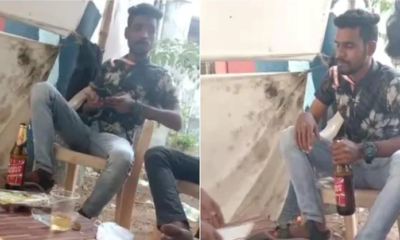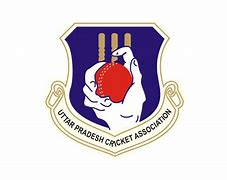Feature
12 convicted, one acquitted in 7/11 Mumbai train blasts

Mumbai: Twelve people were convicted and one acquitted on Friday by a special court here in the 7/11 serial bombings that ripped through Mumbai trains and left 189 dead.
“The long-awaited decision on the July 7, 2006 serial blasts has been given out. Twelve of the 13 accused have been convicted,” Special Public Prosecutor Raja Thakare told the media after the verdict was pronounced.
He said one person has been acquitted, while two of the charges on the 12 convicted attracts death penalty.
He said arguments on the quantum of sentence will be taken up on Monday.
“I think this is justice for all the people who died and those who were injured,” said K.P. Raghuvanshi, former ATS chief, who was part of the blasts probe.
The special MCOCA Court delivered its verdict here on Friday, nine years after RDX bombs blew up seven peak hour suburban trains on the Western Railway in 11 minutes and killed 189 commuters.
The trial concluded on August 19, 2014 and Special Judge Y.D. Shinde pronounced his judgement.
Besides claiming 189 lives, the serial blasts left 817 injured on the evening of July 11, 2006, from 6.23 p.m. onwards – the peak hour when the suburban trains are choked with commuters going home.
The seven bombs went off in trains at Matunga Road, Mahim, Bandra, Khar Road, Jogeshwari, Borivali and Mira Road stations spanning Mumbai and Thane districts.
Police had said that highly sophisticated explosives ripped through mainly the first class compartments of the seven local trains, all headed in the northern direction.
While two blasts occurred when the crowded trains neared Borivali and Mahim stations, the others took place when they were leaving the stations or while running to their destinations.
The explosions carried out by around 15-20 kg of RDX, were so powerful that they blew off the double-layered steel roofs and walls of the seven train compartments.
During the marathon trial, the prosecution produced 188 witnesses, including many commuters, survivors, doctors, police personnel and others, with their deposition running into nearly 5,500 pages.
The lengthy trial saw the deposition by around 190 prosecution witnesses, among whom were commuters who were on the ill-fated trains.
Entertainment
Meghalaya Reserves Legalized Gambling and Sports Betting for Tourists

The State Scores Extra High on Gaming-Friendly Industry Index
Meghalaya scored 92.85 out of 100 possible points in a Gaming Industry Index and proved to be India’s most gaming-friendly state following its recent profound legislation changes over the field allowing land-based and online gaming, including games of chance, under a licensing regime.
The index by the UK India Business Council (UKIBC) uses a scale of 0 to 100 to measure the level of legalisation on gambling and betting achieved by a state based on the scores over a set of seven different games – lottery, horse racing, betting on sports, poker, rummy, casino and fantasy sports
Starting from February last year, Meghalaya became the third state in India’s northeast to legalise gambling and betting after Sikkim and Nagaland. After consultations with the UKIBC, the state proceeded with the adoption of the Meghalaya Regulation of Gaming Act, 2021 and the nullification of the Meghalaya Prevention of Gambling Act, 1970. Subsequently in December, the Meghalaya Regulation of Gaming Rules, 2021 were notified and came into force.
All for the Tourists
The move to legalise and license various forms of offline and online betting and gambling in Meghalaya is aimed at boosting tourism and creating jobs, and altogether raising taxation revenues for the northeastern state. At the same time, the opportunities to bet and gamble legally will be reserved only for tourists and visitors.
“We came out with a Gaming Act and subsequently framed the Regulation of Gaming Rules, 2021. The government will accordingly issue licenses to operate games of skill and chance, both online and offline,” said James P. K. Sangma, Meghalaya State Law and Taxation Minister speaking in the capital city of Shillong. “But the legalized gambling and gaming will only be for tourists and not residents of Meghalaya,” he continued.
To be allowed to play, tourists and people visiting the state for work or business purposes will have to prove their non-resident status by presenting appropriate documents, in a process similar to a bank KYC (Know Your Customer) procedure.
Meghalaya Reaches Out to a Vast Market
With 140 millions of people in India estimated to bet regularly on sports, and a total of 370 million desi bettors around prominent sporting events, as per data from one of the latest reports by Esse N Videri, Meghalaya is set to reach out and take a piece of a vast market.
Estimates on the financial value of India’s sports betting market, combined across all types of offline channels and online sports and cricket predictions and betting platforms, speak about amounts between $130 and $150 billion (roughly between ₹9.7 and ₹11.5 lakh crore).
Andhra Pradesh, Telangana and Delhi are shown to deliver the highest number of bettors and Meghalaya can count on substantial tourists flow from their betting circles. The sports betting communities of Karnataka, Maharashtra, Uttar Pradesh and Haryana are also not to be underestimated.
Among the sports, cricket is most popular, registering 68 percent of the total bet count analyzed by Esse N Videri. Football takes second position with 11 percent of the bets, followed by betting on FIFA at 7 percent and on eCricket at 5 percent. The last position in the Top 5 of popular sports for betting in India is taken by tennis with 3 percent of the bet count.
Local Citizens will Still have Their Teer Betting
Meghalaya residents will still be permitted to participate in teer betting over arrow-shooting results. Teer is a traditional method of gambling, somewhat similar to a lottery draw, and held under the rules of the Meghalaya Regulation of the Game of Arrow Shooting and the Sale of Teer Tickets Act, 2018.
Teer includes bettors wagering on the number of arrows that reach the target which is placed about 50 meters away from a team of 20 archers positioned in a semicircle.
The archers shoot volleys of arrows at the target for ten minutes, and players place their bets choosing a number between 0 and 99 trying to guess the last two digits of the number of arrows that successfully pierce the target.
If, for example, the number of hits is 256, anyone who has bet on 56 wins an amount eight times bigger than their wager.























